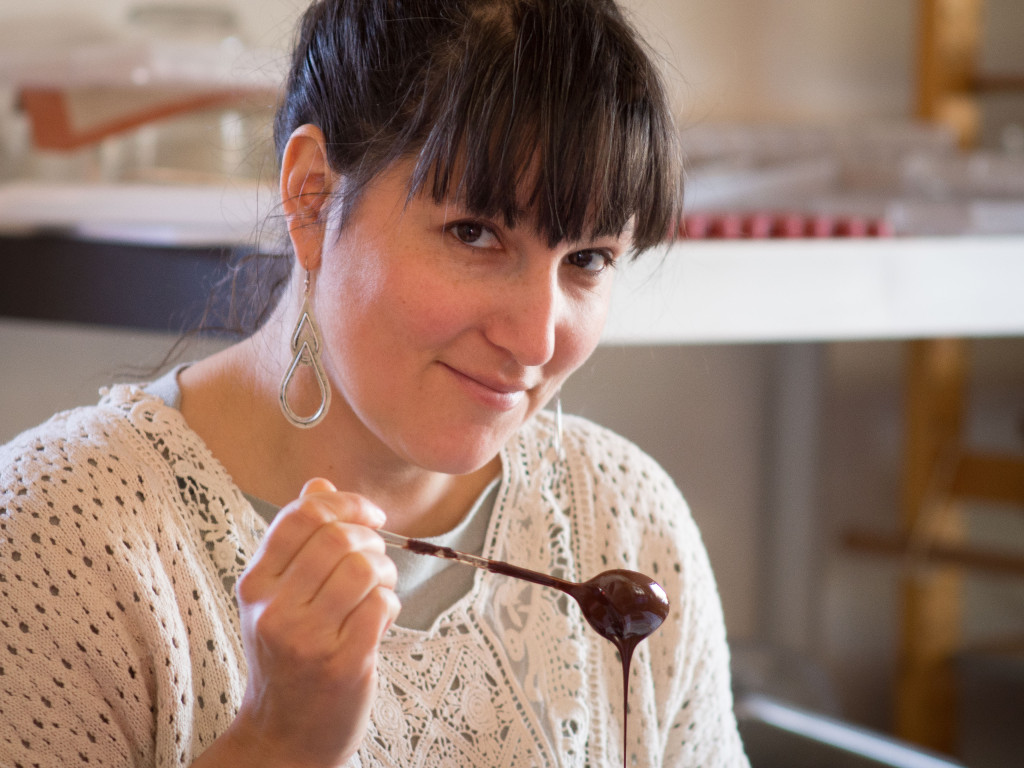|
This page was exported from Bancroft this Week
[ https://www.bancroftthisweek.com ] Export date: Mon Mar 31 3:49:44 2025 / +0000 GMT |
Sustainability an important ingredient to chocolatier By Harold Eastman “It was an accident.” This revelation about the beginnings of Shaun Sellers' chocolate business comes as a bit of a surprise. If you talk to Shaun for any more than five minutes about what she does, you'll discover that she's meticulous to a fault about the products she makes. It was, however, truly happenstance that got her into chocolate. She was living in Costa Rica at the time, and to generate some extra cash she started making and selling chocolate and caramel bark based on one of her mother's recipes. The locals loved it, so Shaun decided to start working on a larger scale and ordered a 10-kilogram block of chocolate. Alas, when the shipment arrived, the chocolate wasn't what she'd ordered, and couldn't be used in her recipe, or be returned. As a way to use up the block, she started making truffles. And demand went through the roof. In fact, she finally had to stop supplying local restaurants and hotels just to keep up with sales at her own coffee bar and bookstore. When Shaun moved back to North Hastings, she decided that making chocolate was what she wanted to do. But it would be chocolate on her own terms: made from fair trade, organic ingredients locally sourced when possible, and produced in the context of a low energy footprint. The Maple Leaf Chocolate Company was born. “I pay attention to everything,” Shaun says, and it comes across as a statement of fact, not a boasting stance. She sources fair trade chocolate, sugar and spices sustainable and organically produced in Latin America, then looks much closer to home for other ingredients. Butter and cream, for instance, come from an organic dairy near Kingston. Maple syrup and berries come from neighbours who practice sustainable and organic agriculture. “I source locally as much as possible,” she explains, “so I can know how something is made or grown. The further out I have to go for an ingredient, the more particular I am about getting certification about the circumstances under which it's produced.” All the packaging she uses is recyclable, except for the labels, and she's working on those. Her transparent wrap isn't plastic; it's cellulose, made from sorghum and wheat. Even her house, where the chocolate is made, reflects her commitment to sustainability. It's insulated with sheep's wool, built with local materials, powered almost entirely by solar panels. Shaun is a chocolatier, as opposed to a chocolate maker, which means she works with a high-quality chocolate that's already been made from the basic ingredients of cocoa bean powder, cocoa butter and sugar. But it's what she does with that chocolate that makes it special, and her methods are as meticulous as her sourcing practices. The key process is something called “tempering,” where chocolate is heated and cooled several times to alter the crystallization pattern of the cocoa butter. Differing temperatures and numbers of heating cycles can produce all sorts of subtle variations in the taste and texture of the final product. Adding other ingredients like spices, berries, and nuts expands even further the delightful range of flavours Shaun's chocolate is known for. “It's not hard,” she says modestly. But an afternoon in her small production kitchen suggests otherwise. Chocolate is an unforgiving medium, and not for the faint of heart. “I am,” she finally concedes, “fairly fearless when it comes to making things.” And Maple Leaf Chocolate aficionados, a growing legion of them, are glad she is. |
|
Post date: 2015-02-24 16:57:41 Post date GMT: 2015-02-24 21:57:41 Post modified date: 2015-02-24 17:00:11 Post modified date GMT: 2015-02-24 22:00:11 |
| Powered by [ Universal Post Manager ] plugin. HTML saving format developed by gVectors Team www.gVectors.com |